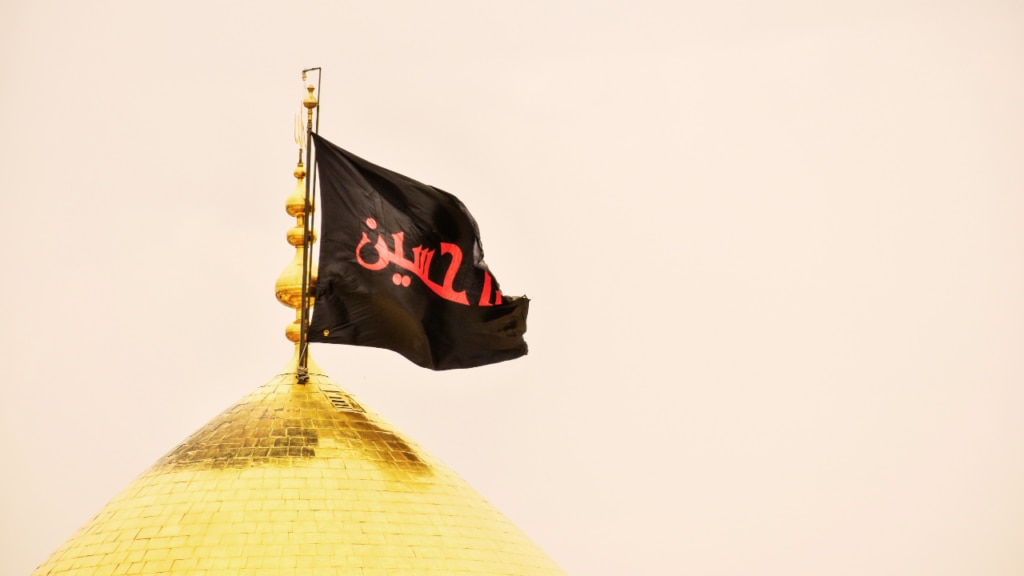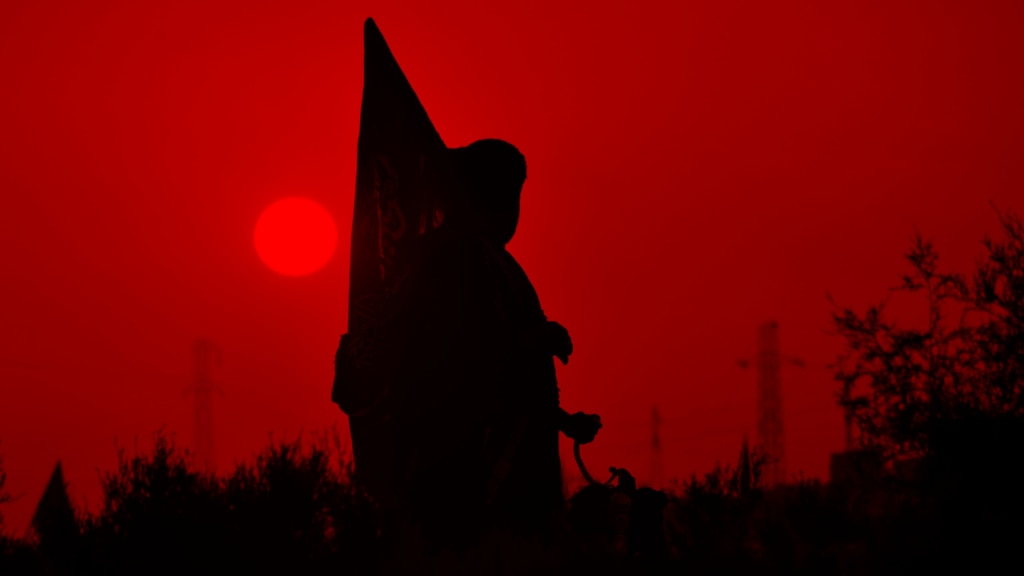Asif M Basit, Ahmadiyya Archive & Research Centre

Like many historical events from the early Islamic period, the Battle of Karbala has also been tainted with pious stories and hagiographical attempts over the centuries.
While some of the stories associated with it seem to aim at presenting the Karbala episode as an extremely tragic one, and quite rightly so, the actual tragedy seems to have gone missing in the midst of heroic narratives and allegorical representations.
Without delving into the commonly known details of the battle, it is necessary to present a brief outline of the epic.
The roots of Karbala in pre-Islamic Mecca
The Quraish of Mecca had several clans tracing their lineage back to Qusai ibn Kilab through his three sons Abd Dar, Abd Manaf and Abd al-Uzza. Abd Manaf succeeded his father, which meant that the traditional policy of primogeniture was breached, but it was the will of Qusai at his deathbed. From his many children, his sons Nawfal, Hashim, Abd Shams and Muttalib are renowned for their roles in the custodianship of Mecca.
Primogeniture was breached once again when Hashim, having secured inheritance rights for himself and his brothers, was accepted as the leader of the Quraish. The authority of Hashim was challenged not by his brothers, but by his nephew, Umayyah ibn Abd Shams. Unable to gain any support in his uprising, Umayyah moved out of Mecca and settled in Syria, where he spent the rest of his life.
The feud of Banu Umayyah and Banu Hashim
From the line of Hashim was to be his son Abd Muttalib, then his sons Abdullah and Abu Talib, and their sons Muhammadsa ibn Abdullah and Alira ibn Abi Talib respectively.
The line of Umayyah ibn Abd Shams went on to have his son Harb ibn Umayyah, who passed the legacy to his son Abu Sufyan ibn Harb, the father of Muawiya ibn Abi Sufyan.
When Yazid bin Muawiya and Husain ibn Alira came head-to-head in the battle of Karbala, it was not only a case of two individuals, but a conflict between the legacies of two clans: Banu Hashim and Banu Umayyah.
The rise of the Umayyad Dynasty
Traditions have it that Abu Sufyan, although having accepted Islam when Prophet Muhammadsa conquered Mecca, remained disgruntled at the loss of his chieftainship of Mecca. He is, thus, said to have been reluctant in accepting Abu Bakrra, the first caliph, as the leader of the faithful, although the latter appointed him governor of Najran and later gave him major stakes in the Levant and Syria. Abu Sufyan was present in the battle of Yarmuq when Syria was conquered by the Muslim army, and his son Yazid (not to be confused with Yazid ibn Muawiya) was appointed governor. Yazid’s untimely death saw the command of Syria passed down to his brother Muawiya, inadvertently setting up the Banu Umayya as a dynasty of the Levant and Syria governorates.
Muawiya had refused the acceptance of Ali’sra caliphate and had defeated him in the Battle of Siffin, weakening Ali’sra power and leaving him prone to attacks from all opposing factions.
With Ali’sra assassination at the hands of a Kharjiite came to its end the era of the Rashidun – the rightly guided caliphs – and the era of Muawiya’s self-proclaimed caliphate began.
The build-up of Karbala in the Syria/Hijaz conflict
Muawiya kept a close eye on the affairs of the rest of the Islamic Empire, especially the Hijaz, which had remained its nerve centre from the time of Prophet Muhammadsa through to the time of Alira, who later moved the seat of the caliphate from Medina to Kufa.
The presence of Prophet Muhammad’ssa close relatives and progeny did not sit well with Muawiya, who tried to keep them close by awarding them high-ranking roles in the Hijaz, yet not letting their activities go out of sight.
He had kept strict tabs on the likes of Abdullah ibn Zubayr whose ambition for caliphate was quite evident and who had garnered support from the stalwart companions of the Prophetsa in Hijaz.
Muawiya, passing his caliphate on to his son Yazid, is reported to have warned him against four individuals who were a potential threat to him: Husain ibn Alira, Abdullah ibn Zubayr, Abd al-Rahman ibn Abi Bakr and Abdullah ibn Umar.
Having assumed his father’s office of caliphate, Yazid ensured that he did whatever he could to bring these four individuals into his allegiance. He immediately ordered Walid ibn Utbah, his governor (wali) of Medina, to secure allegiance from Husainra and Ibn Zubayr, even forcefully if required.
Both were summoned to the wali’s court in Medina and both showed reluctance, albeit tactfully, to avoid any altercation. According to Tabari and Ibn Asakir, this was the first point when beheading Husainra was first considered, but not implemented due to the fear of uprisings in the Hijaz.
Baladhuri, Ibn Qutayba, and Dinawari record that Husainra and Ibn Zubayr fled Medina in the dead of night to Mecca. This move shows that both Husainra and Ibn Zubayr did not feel secure from the hostility of the Umayyad caliphs, and also that both had seen the clouds of a civil war loom on the horizon of the Islamic Empire.
Contesting caliphates
Once in Mecca, we have varying accounts from history about Husain’sra movements, but we must now keep in mind three characters, who carved out what we know as the Battle of Karbala:
- Yazid, the self-proclaimed caliph
- Ibn Zubayr and his ambition for the caliphate
- Husainra, supported by the people of Kufa to reclaim the caliphate
In this atmosphere of contesting caliphates, Yazid had a massive army behind him, Ibn Zubayr had the advantage of being in the refuge of al-Hajr al-Aswad, the sacred black stone of the Kaaba, and Husainra was relying on his lineage that ran direct to the Holy Prophetsa, and the hope that this would secure him the support of Kufa.
On his way to Kufa, along with his seventy-two-man-strong group, which included his family, Husain’sra caravan was intercepted by Yazid’s armies and told he could not proceed to Kufa, nor return to Medina. It was in this tense climate that Husainra decided to stay in Karbala, where he arrived on the 2nd of Muharram al-Haram of 61 AH. The rest is history, and of course, a harrowing one.
The multifaceted tragedy of Karbala

The most tragic and hurtful element of the story of Karbala is the martyrdom of Husainra, the grandson of Prophet Muhammadsa, but the fact that it happened not at the hands of the opponents of Islam, but that of his coreligionist Muslims, is what makes the tragedy even more sorrowful. Equally disturbing is the element that those comprising the conflicting camps were either the companions of the Prophetsa or their next generation.
Another painful angle of Karbala is that it was to split the Muslim Ummah into two big contesting factions, both of which would declare one another as heretics and far from the actual Islam taught by the Prophetsa. The Sunni/Shiite schism that ensued turned into a gulf that could not, and might never, be bridged.
The entire conflict had erupted over claims to the caliphate, leaving it in a state that might never be resolved within the given dynamics of the Sunni-Shiite divide and further divides within the two. The civil war of Karbala left the Ummah devoid not only of a legitimate caliphate but also of a bleak view of the future, where both the major sects have their own versions of eschatology. Both differ hugely on how the latter-day saviours, Isa ibn Maryam and the Mahdi, might appear.
Given that the Sunni understanding of the signs of the Mahdi differs from those of the Shiites, both would never agree on an individual who would claim the role, and vice versa. The gulf of divide might only grow broader and deeper if such a claimant were to appear from either side.
The only sign of the Mahdi agreed upon by both parties is his lineage which leads back to the Prophetsa. Would this be possible even if, unlikely as it is, a direct lineage of the claimant was established? The answer does not seem to carry much optimism. Who, more than Husain ibn Alira, the protagonist of Karbala, would ever be able to prove direct, unbroken, uncontaminated descent from the Prophetsa? He was ruthlessly killed along with his many family members in whose veins ran the same sacred blood. How unfortunate that his body was mutilated and his blessed head used as trophy.
If Husain ibn Alira was denied not only caliphate, but imamate as well, who does the Ummah really expect to appear, display his lineage certificate, get accepted by all, and start to control the affairs of the Ummah as its Imam?
Clearly, this person being from either the Sunni or the Shiite factions is far from a possibility and reality.
So, where would this final Imam emerge from? He will have to be from another section of the Islamic community that is neither Sunni nor Shiite.
As one reminisces the sad story of Karbala, one is left to wonder whether it is the past of the Ummah that we should mourn, the present which is equally chaotic, or the future which seems to hold no hope and is heading straight into even scarier woods.
So with the Sunni/Shiite divide in place, no Imamate, no caliphate, no leadership and no unity seems possible. The question is, do we just sit and mourn the murder of Muslim unity, or look around for a solution?


